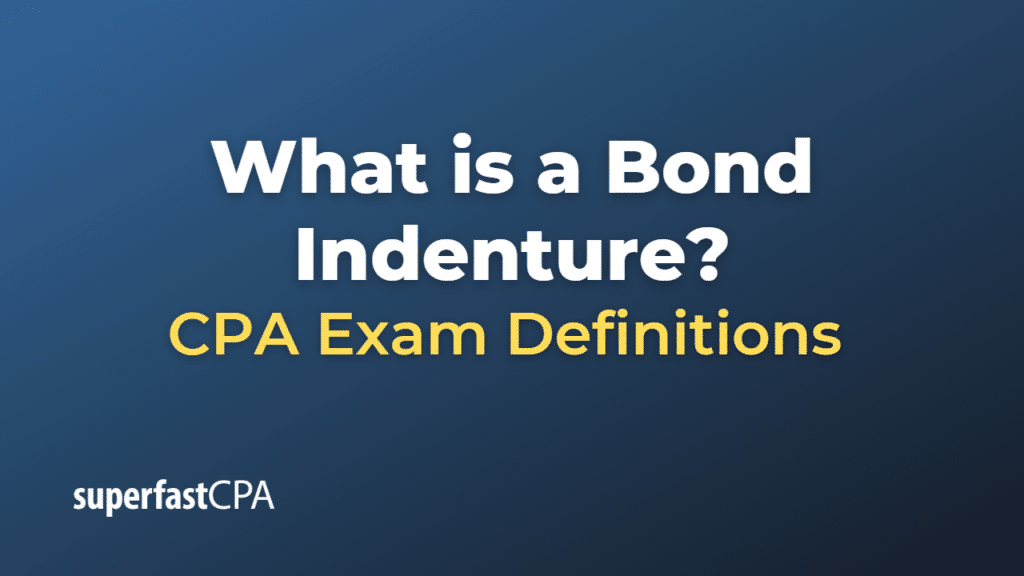Bond Indenture
A bond indenture, also known as a trust indenture or deed of trust, is a legal contract between a bond issuer and the bondholders, outlining the terms and conditions of the bond. The indenture serves as the governing document for the bond, specifying the rights and obligations of both the issuer and the bondholders.
Key elements of a bond indenture typically include:
- Principal amount: The face value (or par value) of the bond, which represents the amount the issuer promises to repay the bondholders at maturity.
- Maturity date: The date on which the bond’s principal amount is due to be repaid to the bondholders.
- Coupon rate: The annual interest rate the issuer agrees to pay on the bond’s face value. Interest payments are usually made semiannually or annually.
- Interest payment dates: The specific dates on which the issuer will make interest payments to bondholders.
- Call provisions: Terms detailing whether and under what conditions the issuer can redeem the bond before its maturity date.
- Sinking fund provisions: Terms describing any arrangements the issuer must make to set aside money for the repayment of the bond principal.
- Covenants: Clauses that impose certain obligations or restrictions on the issuer to protect bondholders’ interests, such as maintaining specific financial ratios or limiting additional debt issuance.
- Events of default: Conditions under which the bond is considered in default, allowing bondholders to demand immediate repayment of the principal or take other actions.
- Trustee: An independent third party, usually a financial institution, responsible for overseeing the administration of the bond and protecting bondholders’ interests.
Bond indentures provide a detailed framework for the bond’s terms and conditions, helping to ensure transparency and protect the interests of bondholders. Before investing in a bond, investors should carefully review the bond indenture to understand their rights and obligations, as well as the risks associated with the investment.
Example of a Bond Indenture
Let’s consider a hypothetical example of a bond indenture for a 10-year corporate bond issued by a company called “Tech Innovators Inc.
- Principal amount: $1,000 (face value or par value)
- Maturity date: June 1, 2033
- Coupon rate: 3.5% per annum, paid semiannually
- Interest payment dates: June 1 and December 1 of each year
- Call provisions: Callable after 5 years at a call price of 101% of the face value
- Sinking fund provisions: None
- Covenants: a. Positive covenant: Tech Innovators Inc. must maintain a current ratio of at least 1.5. b. Negative covenant: Tech Innovators Inc. cannot issue additional senior debt without maintaining a minimum interest coverage ratio of 4.0.
- Events of default: Failure to make interest or principal payments, breach of covenants, bankruptcy or insolvency, etc.
- Trustee: National Trust Bank
In this example, Tech Innovators Inc. issues a 10-year corporate bond with a face value of $1,000 and a 3.5% annual coupon rate, paying interest semiannually on June 1 and December 1. The bond is callable after five years at a call price of 101% of the face value. The indenture also includes covenants that require the company to maintain a certain level of financial stability and limit its ability to take on additional debt. National Trust Bank serves as the trustee, overseeing the bond’s administration and ensuring that Tech Innovators Inc. meets its obligations to bondholders.
Before investing in the bond, investors should review the bond indenture to understand the terms and conditions, as well as the risks associated with the investment.













